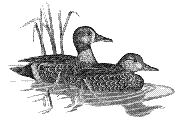United States Fish and Wildlife Service

Waterfowl Management Handbook
Date of this Version
January 1990
Abstract
Agriculture, more than any other human activity, has had a profound influence on North American waterfowl. Most agricultural effects have been detrimental, such as the conversion of grassland nesting cover to cropland, the widespread drainage of wetlands, and the use of pesticides that may poison waterfowl or their food. However, some by-products of agriculture have been beneficial, particularly grain or other foods left as residue after harvest. Many waterfowl are opportunistic feeders, and some species such as Canada geese (Branta canadensis), snow geese (Chen caerulescens), mallard (Anas platyrhynchos), northern pintails (A. acuta), and green-winged teal (A. crecca) have learned to capitalize on the abundant foods produced by agriculture. During the last century, migration routes and wintering areas have changed in response to these foods. Some species have developed such strong traditions to northern wintering areas that many populations are now dependent on agricultural foods for their winter survival.


Comments
Published in Diana H. Cross and Paul Vohs (eds.) Waterfowl Management Handbook. Fort Collins, CO: U.S. Fish and Wildlife Service, 1988. Online at http://www.nwrc.usgs.gov/wdb/pub/wmh/contents.html